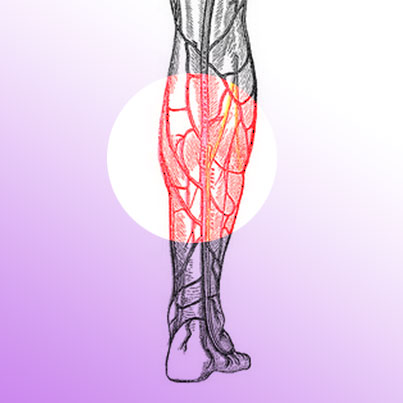 We know that our body is functioning in its own course with all its internal organs working in their fixed rhythm to keep us healthy. But if in case the rhythm of any of its parts fails then we fall sick. The venous insufficiency is also a kind of ailment that may surface due to weakening of the vein in case there is a problem in the blood flow.
We know that our body is functioning in its own course with all its internal organs working in their fixed rhythm to keep us healthy. But if in case the rhythm of any of its parts fails then we fall sick. The venous insufficiency is also a kind of ailment that may surface due to weakening of the vein in case there is a problem in the blood flow.
It mainly occurs on the legs when the one-way valves of the veins stop functioning properly due to Deep Vein Thrombosis or blood-clot and internal High Blood Pressure of the veins, creating problem in the blood circulation. This usually results in patched blood pools on the legs or leads to further problems like Varicose Veins. But if someone is diagnosed with venous insufficiency, it must be treated properly and almost immediately as the ailment if not cared well can result in local damage, damage to the affected legs, or even death. So even if it is a continuous or chronic disease in nature the bad affects can be still be kept away far from harm.
Nonetheless the fact is that even though the illness is easily preventable by following a healthy life-style,yet the ailment may attack the older people due to old age complications or for genetic reasons. History of frequent blood clots, muscle weakness, leg injury, smoking, lazy life and obesity are also close reasons behind venous insufficiency.
But studies found that it is also related to older female patients, pregnancy,varicose veins, and cancer. However medications and immobility can also be the reasons behind venous insufficiency as sometimes medicinal side effects and prolonged posture can trouble the veins of the legs. It is also recommended that all patients do consider signs and symptoms of venous insufficiency (if any) before preparing for some outing or surgery.
The indications
The seemingly visible look of venous insufficiency symptoms usually appears to be nasty and can make the patient distressed with worry at their sudden appearance. However the symptoms are usually the followings:
• Weakness in the legs.
• Cramping.
• Feel of itching, burning, aching or throbbing pain in the legs and feet.
• Discomfort or heaviness of the legs.
• Edema (fluid retention) or swelling of the ankle.
• Discoloration of skin (bluish purple).
• Skin sores or ulcers.
• Visible swollen and arched veins or varicose veins.
Diagnosis & Treatment:
A patient with venous insufficiency symptoms can usually be diagnosed in a number of ways. The procedures can involve a kind of Ultrasound test called the Duplex Doppler scanning that uses transmitted sound waves to understand the velocity of blood flow within the veins of the legs. Another diagnosis technique uses the electrical IPG (Impedance Plethysmography) to evaluate any obstruction in the flow of blood. It can also be diagnosed by an angiogram/ venogram where intravenous (IV) dye is pushed into the veins to have an x-ray to look into the pathways of blood.
Mostly treated by prescribed compression stockings to reduce the swelling; steroids, ointments,antibiotics, surgery, and special boots are also used as per the gravity of the condition. But it is all good if everyone follows a healthy lifestyle by incorporating regular exercises, controlled body weight, change of posture while sitting or standing and by renouncing to smoke.
